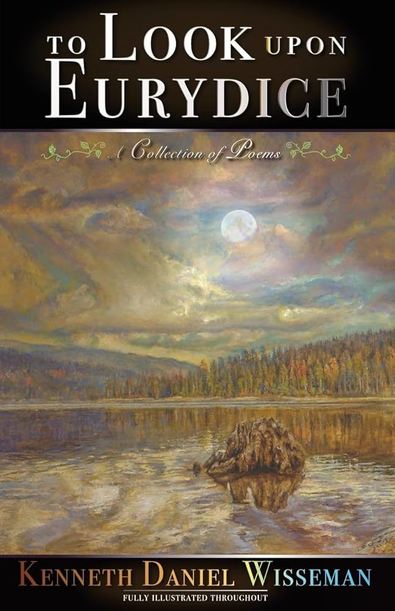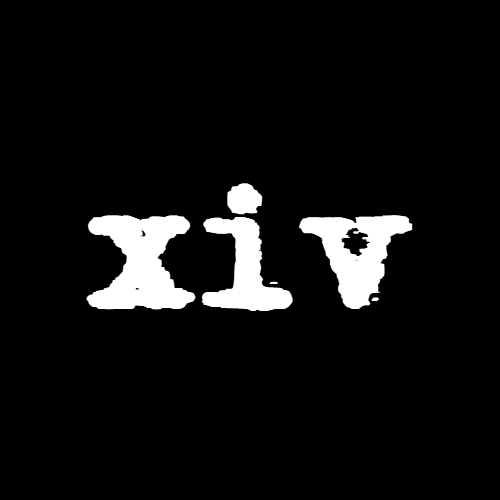A Collection of Poems
by Kenneth Daniel Wisseman

The Book Proper:
One of the first things you notice about this book by casually flipping through the pages is the quality of the book itself. The paper is smooth and the text stands out well and is not small or difficult to read. Original artwork makes its appearance throughout the book, and some pages are embellished at the top with beautiful and original floral designs. Similar designs also appear beside the page numbers. Kenneth has spent a lot of time with the content and presentation to make sure the reader has the best quality book to hold for a pleasurable reading experience.
Reading poetry is what To Look Upon Eurydice is all about. The poems in this book take you back to a time when poetry was an artform. One to be practiced, to be revised, to be rewritten. In short, to be perfected. I do not believe that everyone can write poetry. Poetry is not merely a brain-dump or some pithy saying. Nor is it prose butchered into stanzas to appear as traditional forms. Kenneth’s work is none of these.
In To Look Upon Eurydice, you are looking through a window into the past. You will find traditional forms, but there is also an element of today skillfully woven into each verse irrespective of the poem’s origin. Everything about this book is original, all from the heart and mind of Kenneth, a very talented poet and artist.
The title is very appropriate, and for those who are not familiar with the story of Orpheus and Eurydice, a short but informative account is given on the dust jacket of the hardcover book. This does not appear in the softcover or digital version.
The Content:
Kenneth’s book in divided into three parts reflecting the themes of his poems: Idyls of Love, Laments of Loss and Tales of Lore. Each of these relate to the meaning of the title To Look Upon Eurydice. Among the treasures of this volume, you will find many of the formal styles which to many are now lost due to the popularity of vers libre. This is not to say that vers libre is of a poor quality, however the traditional or formal styles will always win due to the skill required by the poet in different areas. Kenneth demonstrates this skill using Spenserian Stanzas, Shakespearean Sonnet form, Petrarchan, terza rima, quatrain and octave variations and ballad forms with his personal touch. As an accompaniment, some twelve pieces of his artwork are included highlighting various people or circumstances mentioned in the poems.
Some of my favorite poems from this collection are Helen, Cleopatra and Her Antony and The Sound of Autumn. In articular, the latter piece in terza rima reminds me of Shelley’s Ode to the West Wind.
Kenneth mentions a number of poets in his preface who have influenced his work. Personally, I feel that Shelley more than the others have influenced his work.
Extracts:
To conclude this short review, I will draw your attention to some verses, one from each part.
from Idyls of Love
A Deeper Mystery (p9)
Yet here in dreams my love still lies
In sylvan shade and darkened eyes.
There is the inclusion of sylvan shade, located in the woods or forest. The words themselves create a more beautiful image in the mind. Phanopoeia you might say—throwing the image onto the canvas of the mind. We also find the repetition of darkened eyes at the end of each stanza creating a dramatic finish of hope, love and dreams in the final stanza.
from Laments of Loss
This Rustic Place (p55)
A DAFFODIL within the wall,
A gust of wind above,
A tawa tree which gently sways,
She plucks the flow’r with love;
What a wonderful entry into this poem. What we do notice is the metrical adherence noted by flow’r. The poem has a beautiful rhythm throughout with attention to meter.
from Tales of Lore
Cleopatra and Her Antony (p88)
Dawn on a pillared wall, the whiff of perfume,
Resounds the sea, and seamews winged on air;
Uplook’d to eyes so blue in pallid room,
Love’s last confluence, laid on bosom fair:
Of course this is the lead-in to the death of Cleopatra in Part the Third, but how beautiful the images and wording. We can feel the sorrow, heartbreak or longing building as Cleopatra soon clutches the asp to her breast. Again rhythm is paramount and the first line has a minor variation which adds dramatic effect for what is to follow.
Finally:
I know that you will enjoy To Look Upon Eurydice and I have no doubt whatsoever that many of the poems, their expression and emotion, will resonate with you as they have with me. Kenneth’s book can be found on Amazon.
Note:
To review or critique the work of a friend can possibly lead to placing the friendship in doubt if unfavorable, or giving others a false representation if favorable. However, what I have found is that Kenneth is not the person to be upset with criticism, but uses this to perfect his art which is of course his poetry. In the above review, I write as a critic and yes, it is a favorable critique. However it is not because of friendship or acknowledgment, but because of his skill as a poet using traditional forms.
Ferrick Gray
July, 2024
